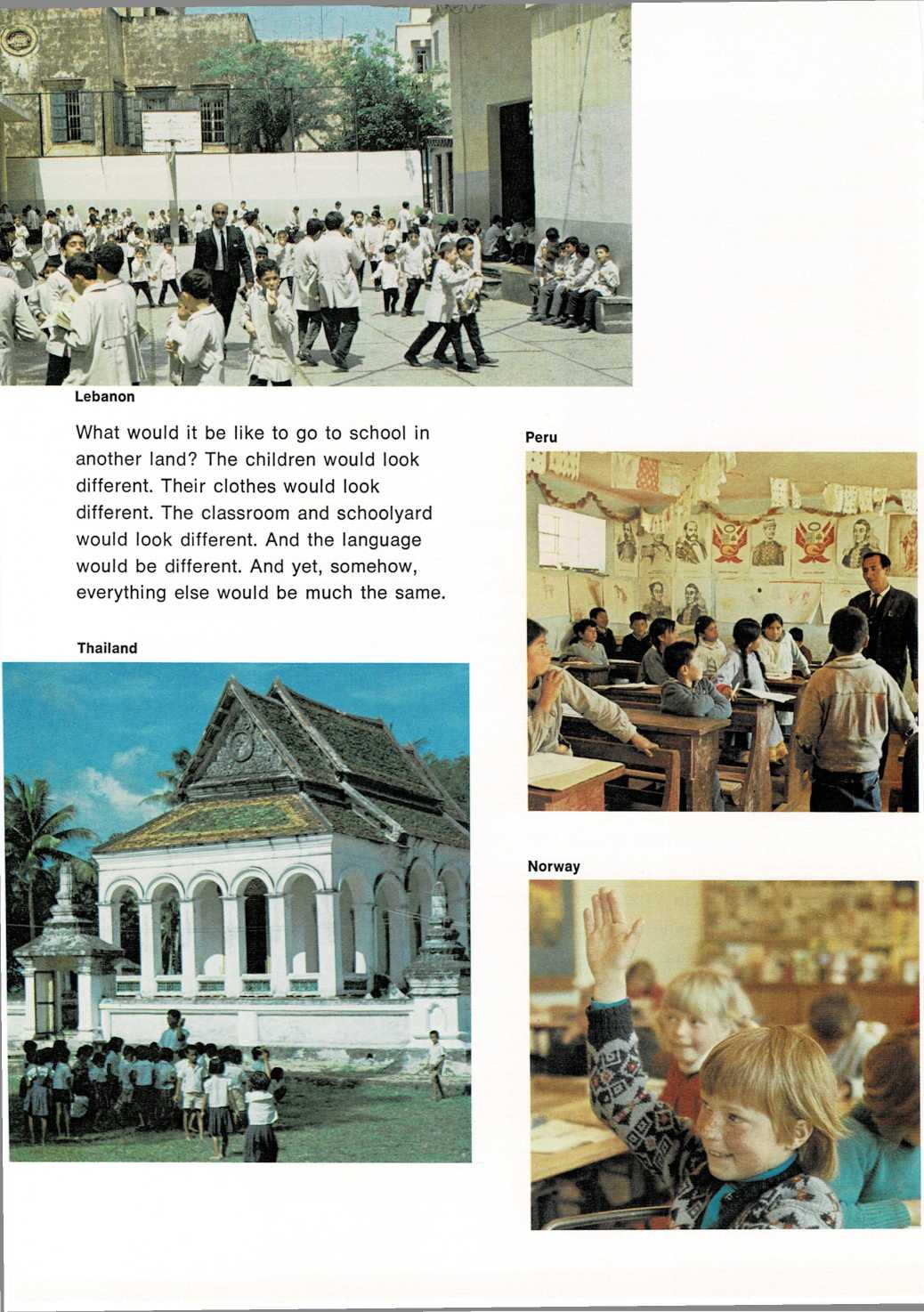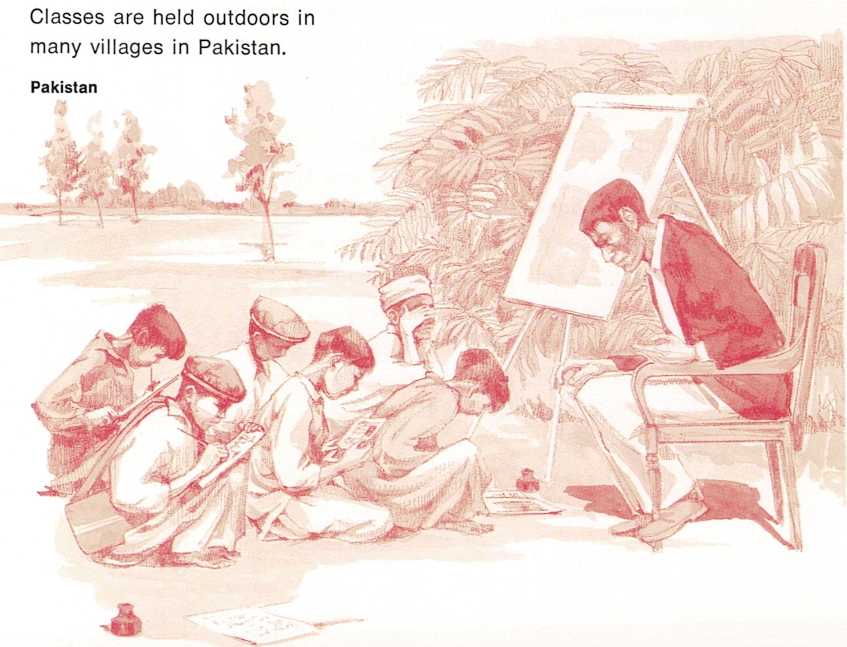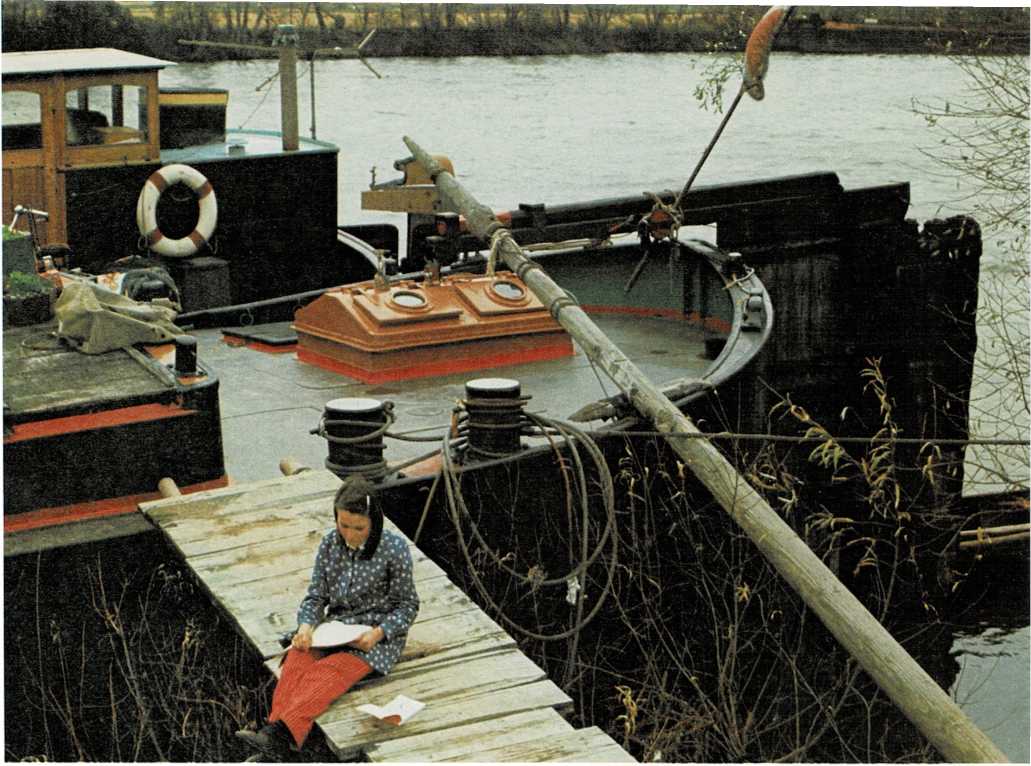
Where do you go to school?
Thanon felt as if there were a thousand butterflies in his stomach. This
would be his first day of school. He was now 8 years old, and in
Thailand, where Thanon lives, this is when children start school.
Thanon didn’t feel like eating breakfast. But, to please his mother, he
did swallow a few mouthfuls of rice. Then he picked up his shoes and
climbed down the ladder that led from the bamboo hut to the ground. He
was careful not to dirty his new school uniform. When he reached the
ground, he put on his shoes and started down the dirt road to school.
The school was the biggest and most beautiful building in the village.
And no wonder, for it was also the village temple. Someday, the
villagers hoped to have enough money for a school. But until then they
would have to use the temple.
When Thanon arrived, the teacher was standing near the door. As he
approached her, Thanon put the palms of his hands together just below
his chin. Then he bowed his head slightly. This is how Thai children
greet grown-ups and show respect for them. The teacher’s warm smile made
Thanon feel better.
In the classroom, the boys sat on one side and the girls on the other
side. Thanon found a seat and sat down. Looking around, he saw that some
of the others seemed a little frightened, too. He was glad to know that
he was not the only one who felt this way.
A school is a place where people meet to learn from a teacher. It can be
in a temple, a one-room schoolhouse, or any other kind of building. In
fact, it doesn’t even have to be in a building.
Many small villages in Pakistan have no schoolhouses. Instead, classes
are held outdoors. The children sit on the ground and write their
lessons on small writing boards called slates. If they do not have
slates, they write in the dirt with a stick.
In Australia, there are children who go to school at home. These
children live far from cities and towns, in a lonely place Australians
call the outback.
F amilies here may live hundreds of miles apart. So the children listen
and talk to a teacher over a two-way radio. If a family doesn’t have a
two-way radio, the children get their lessons in the mail.
In the Netherlands, France, and Germany, many children live on barges
with their families. The barges travel up and down rivers and canals,
carrying products from one town to another.


France
Barge children study as they travel. At cities along the way, they
turn in homework and get assignments.
In the Netherlands, barge children go to special schools in the towns
where the barges stop. While the barges are tied up, the children attend
classes. They are also given lessons to do as they travel. In this way,
they can keep up with their schoolwork.
When the barge gets to the next stop, the children go to another school.
They turn in their homework, go to classes, and get more homework to do.
When Dutch barge children complete the sixth grade, they may be sent to
live with a family on shore. Then they can go to a regular school.

